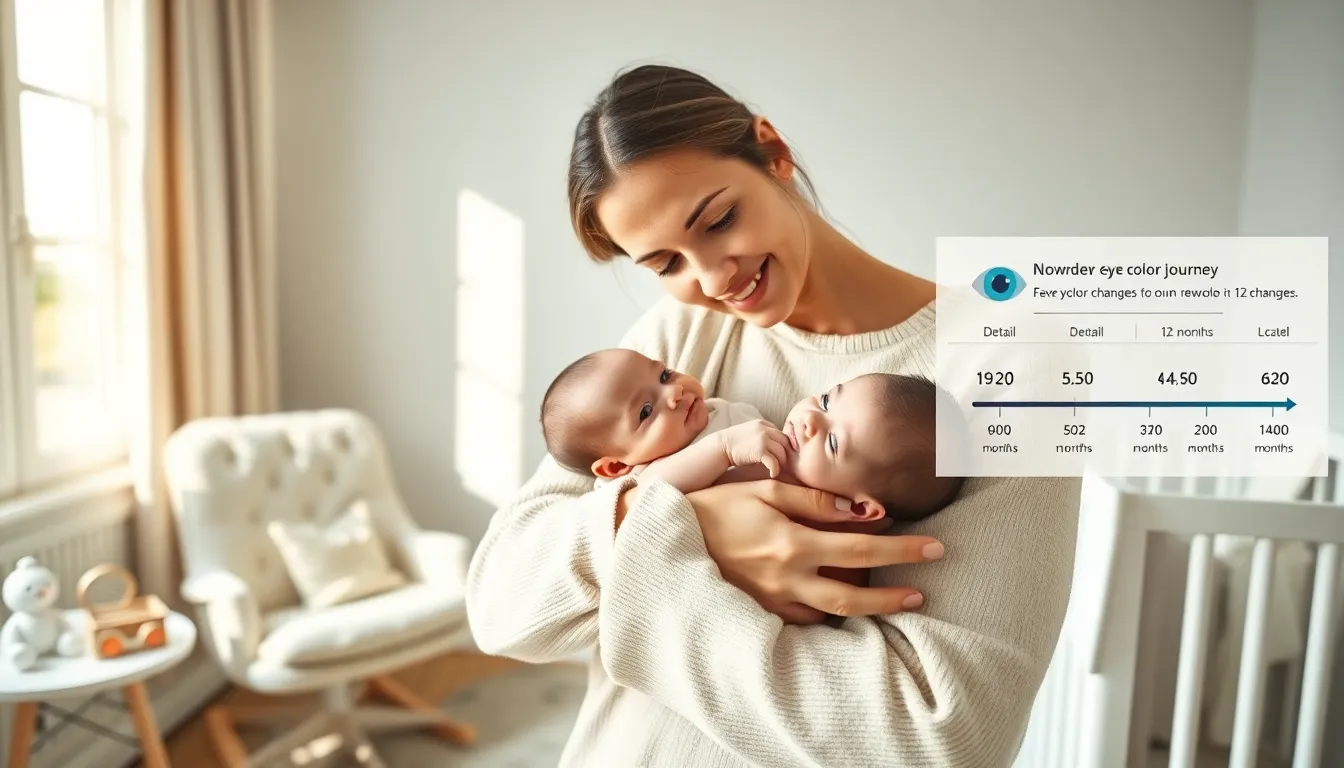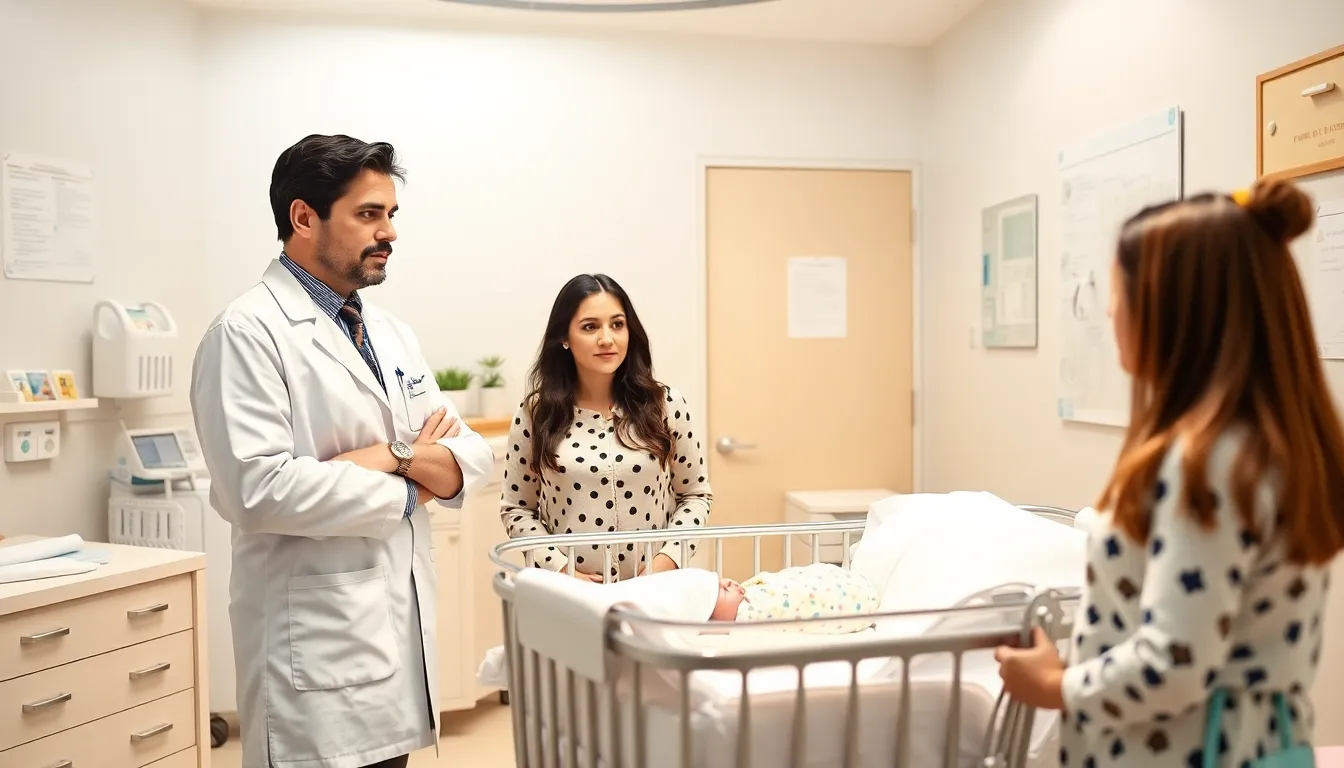New parents often gaze into their newborn’s eyes and wonder: will this blue ever turn brown? Or vice versa? As if sky and sea hues were not enough to keep you guessing, nature has thrown in a delightful twist with eye color changes in infants. Understanding when and why this happens may not make diaper duties any easier, but it sure adds a sprinkle of magic to those sleepless nights. So grab your coffee (you’ll need it), and let’s jump into the vibrant world of newborn eye color changes.
Table of Contents
ToggleUnderstanding Eye Color in Newborns

The Science Behind Eye Color
Eye color development can be a fascinating, yet perplexing subject for new parents. At birth, most babies possess blue or gray eyes due to a lack of melanin. Melanin is the pigment responsible for skin, hair, and eye color. As time goes on, the body produces more melanin, leading to potential changes in eye color. It’s like a little surprise waiting to be revealed.
Genetics plays a crucial role here: both parents contribute to their child’s eye color. Some babies may inherit dominant colors, while others may end up with a beautiful blend. Fun fact: even siblings can have different eye colors due to genetic variation. It’s a colorful family puzzle.
Factors Influencing Eye Color Changes
A variety of factors contribute to the eye color palette produced in infants. The primary factor, of course, is genetics. The specific genes inherited from each parent determine how much melanin is produced. Also, other factors include the health and environment of the baby. Nutritional levels and overall health can affect melanin production, but those influences typically come into play later in life. So, as parents watch their newborn’s eyes change, a mix of biology and a sprinkle of mystery are at play.
Typical Timeline for Eye Color Changes
What to Expect in the First Few Months
During the first three months, parents are likely to see transformations in their baby’s eye color. Perhaps they’re trying to take on the family’s greatest eye color legacy. Many newborns’ blue or gray eyes tend to lighten or become brighter as they develop. Most eye color changes can occur between 6 to 9 months. So, keep that camera close: the cuteness might change appearance.
By the time the infant reaches about 6 months, parents will start to notice clues about what the final color might be. Is it green? Brown? Sometimes babies exhibit hazel or even mixed colors, so embrace the rainbow.
Color Changes After the First Year
Once the child reaches 12 months, the chances of significant eye color changes decrease. By this age, many children have established their eye color, although variances can still occur. Changes can continue until about three years of age, with some subtle tweaks here and there. If the original blue slowly transforms into a rich brown or an astonishing green, it may leave the parents wondering just how many colors their little maestro can actually display.
Caring for Your Newborn’s Developing Eyes
Signs of Healthy Eye Development
To ensure that the little one’s eyes are growing up strong and vibrant, certain signs of healthy eye development should be monitored. Parents should observe the baby’s reactions to light, their focus on objects, and ability to track moving items with their gaze. When babies engage with colorful toys or faces, it’s not just a cute snapshot: it’s a sign of burgeoning eye coordination.
Being proactive in eye care is vital. Regular check-ups with a pediatrician can catch any potential issues early on. Remember, a healthy eye is not just about the color: it’s about functional vision, too. Keep those tiny peepers examined and shielded from bright lights.
When to Consult a Pediatrician
While observing changes in eye color can be exciting, certain signs may indicate the need for a pediatric consultation. If the newborn’s eyes appear red or consistently watery, or if they do not seem responsive to visual stimuli, it’s wise to seek professional advice.
Parents should also be wary if one eye seems to drift more than the other or if the child appears to have trouble focusing. Early detection is key. Doctors are trained to help identify any serious issues that may be affecting vision and eye health.



